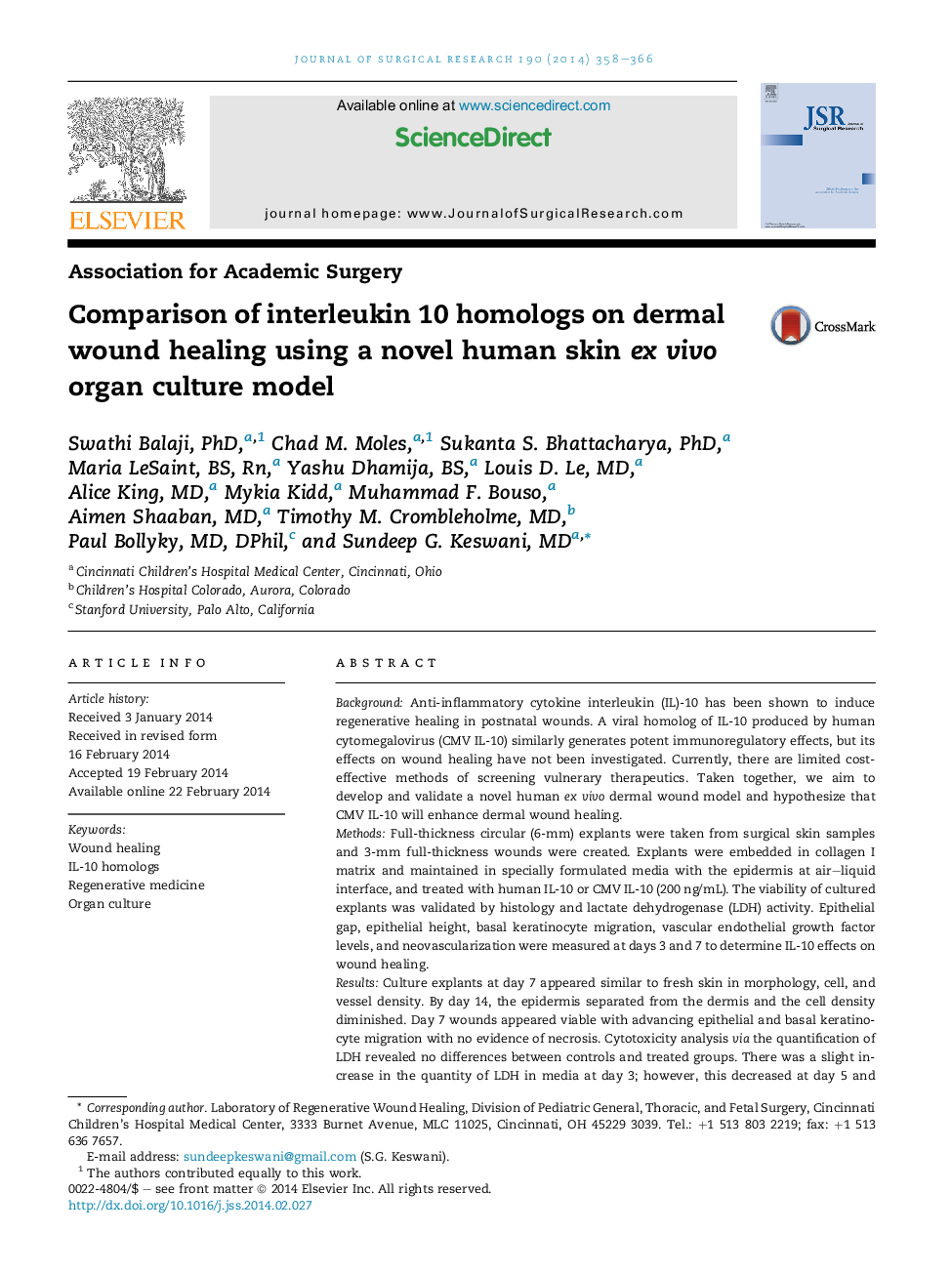| کد مقاله | کد نشریه | سال انتشار | مقاله انگلیسی | نسخه تمام متن |
|---|---|---|---|---|
| 4300204 | 1288414 | 2014 | 9 صفحه PDF | دانلود رایگان |

BackgroundAnti-inflammatory cytokine interleukin (IL)-10 has been shown to induce regenerative healing in postnatal wounds. A viral homolog of IL-10 produced by human cytomegalovirus (CMV IL-10) similarly generates potent immunoregulatory effects, but its effects on wound healing have not been investigated. Currently, there are limited cost-effective methods of screening vulnerary therapeutics. Taken together, we aim to develop and validate a novel human ex vivo dermal wound model and hypothesize that CMV IL-10 will enhance dermal wound healing.MethodsFull-thickness circular (6-mm) explants were taken from surgical skin samples and 3-mm full-thickness wounds were created. Explants were embedded in collagen I matrix and maintained in specially formulated media with the epidermis at air–liquid interface, and treated with human IL-10 or CMV IL-10 (200 ng/mL). The viability of cultured explants was validated by histology and lactate dehydrogenase (LDH) activity. Epithelial gap, epithelial height, basal keratinocyte migration, vascular endothelial growth factor levels, and neovascularization were measured at days 3 and 7 to determine IL-10 effects on wound healing.ResultsCulture explants at day 7 appeared similar to fresh skin in morphology, cell, and vessel density. By day 14, the epidermis separated from the dermis and the cell density diminished. Day 7 wounds appeared viable with advancing epithelial and basal keratinocyte migration with no evidence of necrosis. Cytotoxicity analysis via the quantification of LDH revealed no differences between controls and treated groups. There was a slight increase in the quantity of LDH in media at day 3; however, this decreased at day 5 and continued to decline up to day 21. CMV IL-10 treatment resulted in a significant decrease in the epithelial gap and an increase in epithelial height. There were no differences in the rates of basal keratinocyte migration at day 7 between treated and control groups. Interestingly, human IL-10 increased vascular endothelial growth factor expression and neovascularization compared with controls.ConclusionsThe human ex vivo wound model provides a simple and viable design to study dermal wound healing. Both IL-10 homologs demonstrate vulnerary effects. The viral homolog demonstrates enhanced effects on wound closure compared with human IL-10. These data represent a novel tool that can be used to screen therapeutics, such as CMV IL-10, before preclinical studies.
Journal: Journal of Surgical Research - Volume 190, Issue 1, July 2014, Pages 358–366